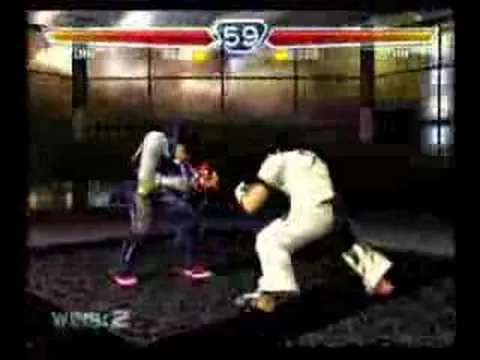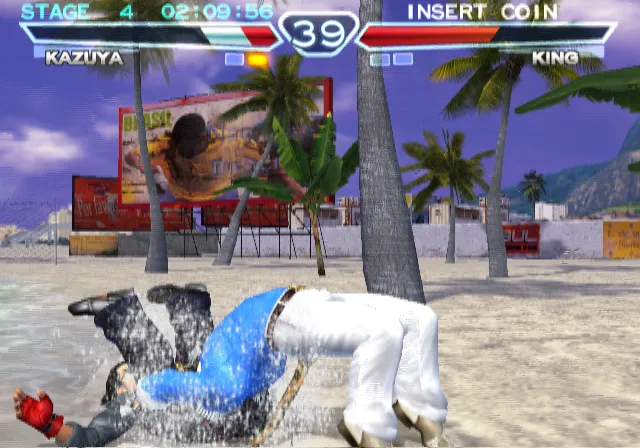

The PS2 era is one that often fills many with inmediate nostalgia, and Tekken used to be the premier fighting franchise in the Playstation consoles. While Tekken 6 and Tag 2 weren't as widely appreciated at their time of release during the PS3, they were quite strong entries in the franchise, and Tekken 7 brought forward the series's third golden era due to its tremendous success in general and e-sports (though this could also be attributed to being the first PC release).
But Tekken was quite huge during the PS1 and PS2: Defining a genre with its first two games alongside Virtua Fighter, only to then flip everything over with the legendary Tekken 3, the PS2 providing an enhanced graphical marvel of a port that was Tekken Tag Tournament alongside the also legendary Tekken 5 which became a huge favorite for many, and even the PSP had incredibly good ports of Tekken Dark Resurrection and Tekken 6.
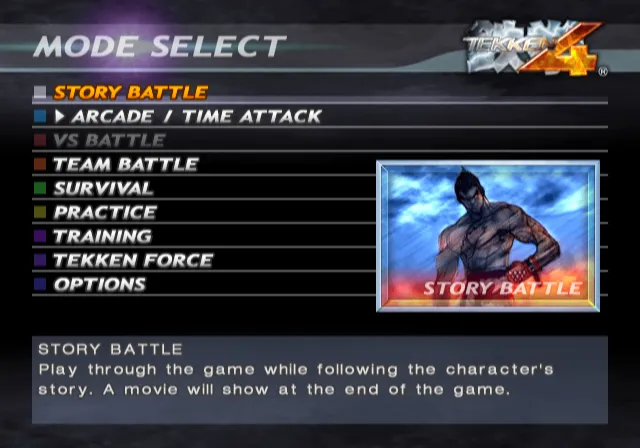
...However, Tekken 4 was the second entry in the PS2 era and the first brand new entry in the next generation that was maligned by most, but mainly forgotten by many for years. This had been changing recently with the wish of a more fleshed out story for non-Mishima characters, and also some more consistent atmosphere than what was seen in Tekken 7. This is where Tekken 4 had started getting far more praise than ever due to how, beyond the notable gameplay quirks that gave it the black sheep status, lied something that was never ever repeated in future entries of the franchise.
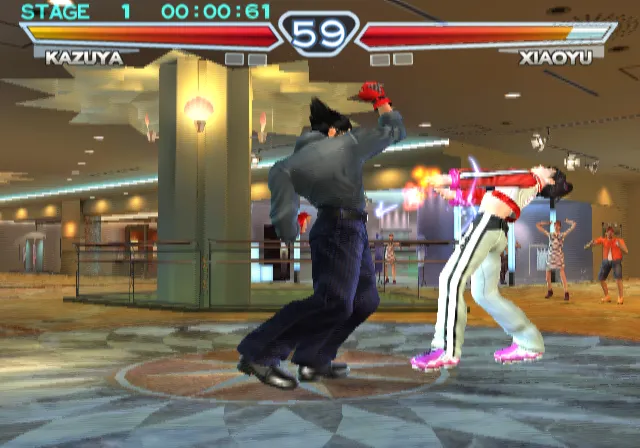
Every character had distinct new outfits that would blend with the realistic and well-designed yet rather surprisingly casual stages seen in this game: You don't fight in volcanos and helipads, you fight at malls and streets!
And sure, you still fight at some few odd places like a Jungle and a freezing chamber...but most of the stages are surprisingly grounded and quite the lookers.

Stuff like Kazuya with casual clothes and sunglasses, Paul having his default outfit having his gi outside (and his alternative looking like a rocker), King having a mexican outfis, Hwoarang having a military suit...there's both a mix of character story details and atmosphere inferred through these: Paul's default outfit and his hairdo-less alternate reflect how he's seriously trying to get back to the top after falling all the way down, King is a mexican wrestler, and Hwoarang had to do military service during the events of this game.
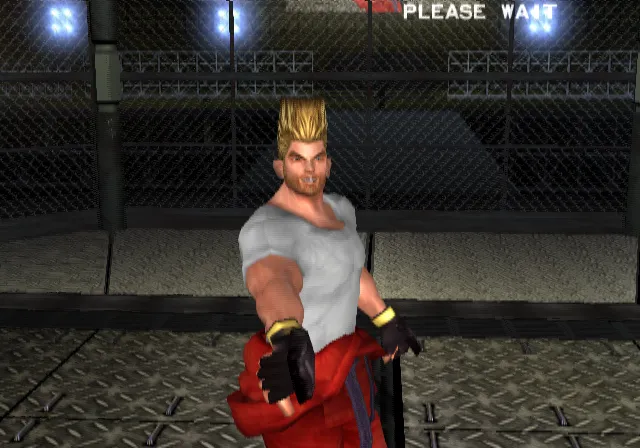
Everthing is so casually different from everything before or after: Instead of being too extravagant, the characters, stages and even story are far more grounded; which is quite refreshing considering everything. However, this was also reflected in a few more things: Uneven terrain stages that were cool but not really liked competitively (most of the time tournaments used the flat Arena stage), Mokujin being replaced with Combot...and some few mechanics and changes added that either didn't stick or were reworked from this game. Oh, and Steve, one of the new characters introduced here, was quite powerful in the competitive scene.
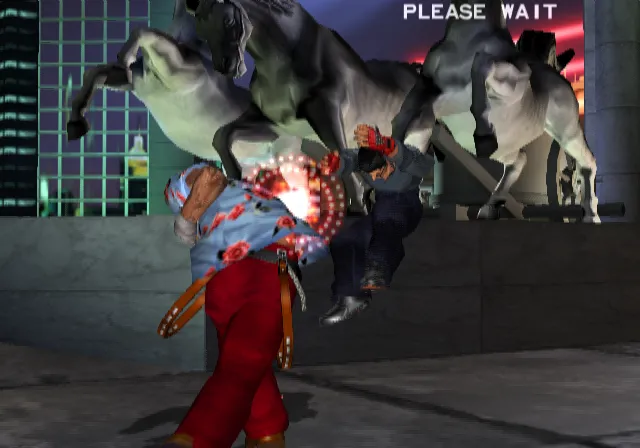
You know Kazuya's famous Wind God Fist, the uppercut where he goes "DORYA" that now you might likely be more aware of because of Smash? That always was supposed to be a launcher (you know, launch you upwards when hit)...but here it ONLY does that on counter hit. This and other weird properties were hard to get used to for competitive players, as well as wall splats being exploitable here, the movement being nerfed...and another "new" character, Jin Kazama (since he had his moveset reworked here), was the meta character of the game because of a very precise technique (one-frame) that was a fast unblockable launcher.
It was so broken that one of the EVO tournaments with the game had both players at the finals play Jin and repeatedly going for the Just-Frame Laser Scraper trick, which you can notice as when they use a three hit uppercut combo that sometimes breaks through a player's guard.
Oh, and speaking of weird things, Heihachi had a new outfit that...well...
I think it should speak for itself. It does have some relation to Japanese history from what I heard, but out of context (and arguably even with context)...that's quite weird.
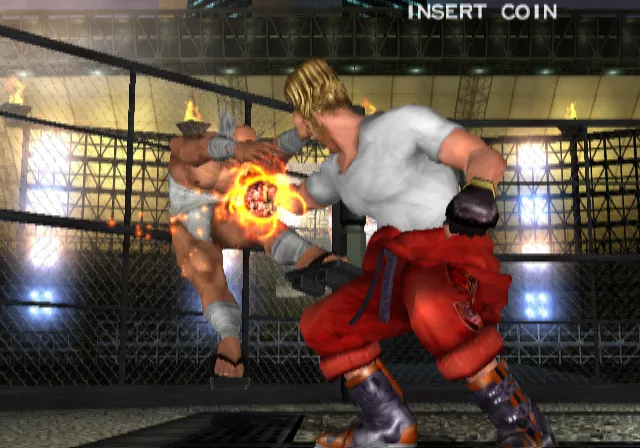
Tekken 4 might have been a low point for the franchise for everything it stood up to that point, but it left a lot of things for Tekken 5 to pick up (more voice lines, walls, the expanded moves), and even then, its hard to argue that Tekken 4 had a lot of heart put to it to make something that really stood out from before. Even if it fell to trying to stray too far from the fans expectations (and new mechanics/characters not receiving enough balance), this game is still a good fighting game all things considered, and everything else that was there frmo the presentation, music and story are what single-handedly made this one be so memorable to many.
Oh, and Tekken Force from Tekken 3 returned, bigger than ever. Maybe too big though, since levels are quite large now. But hey, you can finally eat C H I C K E N again!


Spanish translation with DeepL. All screenshots were captured by myself.
Español
La época de la PS2 suele llenar a muchos de nostalgia inmediata, y Tekken solía ser la principal franquicia de lucha en las consolas Playstation. Aunque Tekken 6 y Tag 2 no fueron tan apreciados en su época de lanzamiento durante la PS3, fueron entradas bastante fuertes en la franquicia, y Tekken 7 adelantó la tercera época dorada de la serie debido a su tremendo éxito en general y en los deportes electrónicos (aunque esto también podría atribuirse a que fue el primer lanzamiento en PC).
Sin embargo, Tekken fue muy importante durante la PS1 y la PS2: definió un género con sus dos primeros juegos junto a Virtua Fighter, para luego darle la vuelta a todo con el legendario Tekken 3, la PS2 proporcionó una maravilla gráfica mejorada que fue Tekken Tag Tournament junto con el también legendario Tekken 5, que se convirtió en uno de los favoritos de muchos, e incluso la PSP tuvo ports increíblemente buenos de Tekken Dark Resurrection y Tekken 6.

...Sin embargo, Tekken 4 fue la segunda entrada de la era PS2 y la primera de la nueva generación que fue denostada por la mayoría, pero principalmente olvidada por muchos durante años. Esto había cambiado recientemente con el deseo de una historia más desarrollada para los personajes que no son Mishima, y también una atmósfera más consistente que la que se vio en Tekken 7. Aquí es donde Tekken 4 había empezado a recibir más elogios que nunca debido a cómo, más allá de las notables peculiaridades de la jugabilidad que le dieron el estatus de oveja negra, mentía algo que nunca jamás se repitió en futuras entradas de la franquicia.

Todos los personajes contaban con nuevos trajes distintivos que combinaban con los escenarios realistas y bien diseñados, aunque sorprendentemente informales, que se veían en este juego: No se lucha en volcanes y helipuertos, sino en centros comerciales y calles.
Y claro, todavía luchas en algunos lugares extraños como una selva y una cámara de congelación... pero la mayor parte de los escenarios son sorprendentemente caseros y bastante bonitos.

Cosas como Kazuya con ropa informal y gafas de sol, Paul con su traje por defecto con su gi fuera (y su alternativa con aspecto de rockero), King con un outfis mexicano, Hwoarang con un traje militar... hay una mezcla de detalles de la historia del personaje y de la atmósfera que se infiere a través de ellos: El atuendo por defecto de Paul y el alternativo sin peinado reflejan que está tratando seriamente de volver a la cima después de haber caído, King es un luchador mexicano y Hwoarang tuvo que hacer el servicio militar durante los eventos de este juego.

Todo es tan casualmente diferente de todo lo anterior o posterior: En lugar de ser demasiado extravagantes, los personajes, los escenarios e incluso la historia son mucho más aterrizados; lo cual es bastante refrescante teniendo en cuenta todo. Sin embargo, esto también se reflejó en algunas cosas más: Escenarios de terreno desigual que eran geniales pero que no gustaban mucho a nivel competitivo (la mayor parte de los torneos utilizaban el escenario plano de la Arena), la sustitución de Mokujin por Combot... y algunas mecánicas y cambios añadidos que, o bien no pegaban, o serían reajustados en las siguientes entregas. Ah, y Steve, uno de los nuevos personajes introducidos aquí, era bastante poderoso en la escena competitiva.

¿Conoces el famoso Wind God Fist de Kazuya, el uppercut en el que hace "DORYA" y que ahora probablemente conozcas mejor gracias a Smash? Se suponía que siempre era un launcher (ya sabes, te lanza hacia arriba cuando te golpea)... pero aquí SÓLO lo hace si lo conectas como contraataque (Counter Hit). Esto y otras propiedades extrañas fueron difíciles de acostumbrar para los jugadores competitivos, además de que los wallsplats eran explotables aquí, el movimiento fue nerfeado... y otro personaje "nuevo", Jin Kazama (desde que tuvo su moveset cambiado por completo aquí), fue el meta personaje del juego debido a una técnica muy precisa (de un solo frame) que era un lanzador rápido desbloqueable.
Estaba tan roto que en uno de los torneos EVO con el juego, los dos jugadores de la final jugaban con Jin y recurrían repetidamente al truco Just-Frame Laser Scraper, que se puede notar como cuando usan un combo uppercut de tres golpes que a veces rompe la guardia de un jugador.
Ah, y hablando de cosas raras, Heihachi tenía un nuevo traje que... bueno...
Creo que debería hablar por sí mismo. Por lo que he oído, tiene cierta relación con la historia japonesa, pero fuera de contexto (y podría decirse que incluso con contexto)... es bastante raro.

Puede que Tekken 4 haya sido un punto bajo para la franquicia por todo lo que representaba hasta ese momento, pero dejó muchas cosas para que Tekken 5 las retomara (más líneas de voz, paredes, los movimientos expandidos), e incluso así, es difícil discutir que Tekken 4 tuvo mucho corazón puesto para hacer algo que realmente destacara de lo anterior. Incluso aunque se haya desviado demasiado de las expectativas de los fans (y las nuevas mecánicas/personajes no hayan recibido el suficiente equilibrio), este juego sigue siendo un buen juego de lucha en su conjunto, y todo lo demás que había, como la presentación, la música y la historia, es lo que ha hecho que este juego sea tan memorable para muchos.
Ah, y el Tekken Force de Tekken 3 volvió, más grande que nunca. Aunque quizá sea demasiado grande, ya que los niveles son bastante grandes ahora. Pero oye, ¡por fin puedes volver a comer C H I C K E N!

Traducción realizada con la versión gratuita del traductor www.DeepL.com/Translator

Traducción al español hecha con DeepL. Todas las fotos capturadas por mí.
